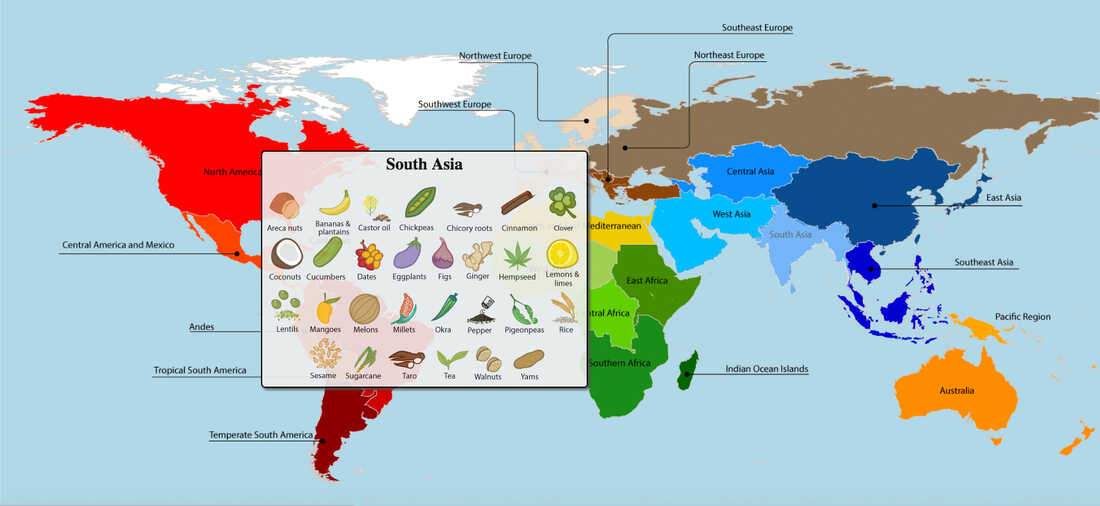What Constitutes a "Hidden Gem" in 2025?
The definition of a "hidden gem" is constantly evolving. In 2025, it goes beyond simply being undiscovered. It encompasses sustainability, community engagement, and the preservation of local cultures. A true hidden gem offers an immersive experience that benefits both the traveler and the host community. It’s a place where tourism doesn't overshadow authenticity, but rather enhances it.
Practical Guidance: Finding Your Hidden Gem
Discovering these unique locations requires a shift in mindset and a proactive approach. Here's how to embark on your journey:
1. Research Beyond the Tourist Guides:
Traditional guidebooks often focus on mainstream attractions. Explore alternative sources like:
- Independent Travel Blogs: These blogs often feature firsthand accounts and insider tips from travelers who have ventured off the beaten path.
- Community Forums: Online forums dedicated to specific regions or interests can provide invaluable local knowledge.
- Academic Journals and Cultural Organizations: For destinations with a strong historical or cultural significance, these resources offer deeper insights.
- Social Media (with caution): Platforms like Instagram and TikTok can highlight emerging destinations, but be mindful of filters and potential over-tourism. Look for accounts that emphasize responsible travel.
2. Connect with Locals:
The best way to uncover hidden gems is to tap into the knowledge of the people who live there. Consider:
- Homestays and Locally Owned Accommodations: These offer opportunities for direct interaction with locals and a more authentic experience.
- Guided Tours by Local Operators: Choose tours that are run by local companies and prioritize sustainable practices.
- Language Exchange Programs: Learning a few basic phrases can open doors and facilitate meaningful conversations.
3. Embrace Spontaneity:
Sometimes, the most rewarding experiences are the ones you don't plan. Be open to detours, unexpected encounters, and the freedom to explore. Allow for flexibility in your itinerary to accommodate serendipitous discoveries.
4. Travel During the Off-Season:
Visiting popular destinations during the shoulder season (the months just before and after peak season) can offer a more peaceful and authentic experience. You'll encounter fewer crowds, lower prices, and a more relaxed atmosphere.
5. Prioritize Sustainable and Responsible Travel:
Ensure your travels have a positive impact on the environment and local communities. Consider the following:
- Reduce Your Carbon Footprint: Choose eco-friendly transportation options and minimize your consumption of resources.
- Support Local Businesses: Patronize locally owned restaurants, shops, and accommodations.
- Respect Local Customs and Traditions: Learn about the local culture and be mindful of your behavior.
- Avoid Contributing to Over-Tourism: Choose less crowded destinations and travel during the off-season.
- Leave No Trace: Pack out everything you pack in and minimize your impact on the environment.
Evaluating Potential Hidden Gems: A Checklist
Before setting off to a prospective hidden gem, consider these factors to ensure a fulfilling and responsible travel experience:
- Authenticity: Does the destination offer a genuine reflection of its local culture and traditions, or has it been overly influenced by tourism?
- Accessibility: Is the destination easily accessible, or does it require significant effort to reach? Consider transportation options and potential challenges.
- Sustainability: Are there sustainable tourism practices in place to protect the environment and support local communities?
- Safety: Research the safety of the destination and take necessary precautions to protect yourself and your belongings.
- Impact: How will your visit impact the local community and environment? Choose destinations and activities that have a positive impact.
- Cost: Factor in the cost of transportation, accommodation, food, and activities. Hidden gems may not always be cheaper than mainstream destinations.
Examples of Potential Hidden Gems in 2025
Here are a few examples of destinations that might qualify as hidden gems in 2025:
- The Faroe Islands: A remote archipelago in the North Atlantic, offering stunning landscapes, unique wildlife, and a rich Viking history.
- Bhutan: A Himalayan kingdom known for its stunning monasteries, breathtaking scenery, and commitment to Gross National Happiness.
- Svalbard, Norway: A remote Arctic archipelago offering opportunities for wildlife viewing, glacier hiking, and exploring abandoned mining towns.
- Palawan, Philippines: A tropical paradise with pristine beaches, turquoise waters, and lush rainforests.
- Chefchaouen, Morocco: A charming blue-washed town nestled in the Rif Mountains, offering a peaceful and authentic Moroccan experience.
- Guimarães, Portugal: Often called the "birthplace of Portugal," this historic city boasts a well-preserved medieval center and a rich cultural heritage.
Long-Term Considerations for Sustainable Exploration
Discovering and experiencing hidden gems isn't just about the initial trip; it's about long-term engagement and responsible stewardship. Consider the following:
1. Supporting Conservation Efforts:
Many hidden gems are located in fragile ecosystems or areas with unique cultural heritage. Support conservation efforts by donating to local organizations or volunteering your time.
2. Promoting Responsible Tourism:
Share your experiences with others and encourage them to travel responsibly. Highlight the importance of respecting local cultures, supporting local businesses, and minimizing environmental impact. Use your platform to advocate for sustainable tourism practices.
3. Staying Informed:
Keep up-to-date on the latest news and developments in the destinations you've visited. Be aware of any potential threats to the environment or local communities, and take action to address them.
4. Returning Responsibly:
When you return to a hidden gem, be mindful of how it has changed since your last visit. Continue to support local businesses and respect the local culture. Avoid contributing to over-tourism or any other negative impacts.
The Role of Technology in Unveiling Hidden Gems
While serendipity plays a part, technology can aid in the discovery process. However, it's crucial to use it responsibly:
- Mapping Applications: Use offline maps to navigate remote areas and discover hidden trails. Platforms like Gaia GPS are valuable.
- Translation Apps: Language barriers can be significant. Real-time translation apps facilitate communication and deeper cultural exchange.
- Citizen Science Initiatives: Participate in data collection for environmental monitoring or cultural preservation through apps like iNaturalist.
- Avoid Over-Reliance: Don't let technology overshadow the experience. Disconnect occasionally to fully immerse yourself in the environment.
Ethical Considerations and Potential Pitfalls
The rising popularity of "hidden gems" can ironically lead to their destruction if not managed carefully. Be aware of the following pitfalls:
- Gentrification and Displacement: Increased tourism can drive up prices and displace local residents.
- Environmental Degradation: Untreated waste, habitat destruction, and increased pollution can damage fragile ecosystems.
- Cultural Commodification: Authentic cultural practices can be staged or altered to cater to tourist expectations.
- Loss of Authenticity: The very charm that made a destination a "hidden gem" can disappear as it becomes more mainstream.
It’s important to be aware of these potential pitfalls and to make conscious choices that minimize your impact and support the long-term sustainability of these special places.
Financial Considerations
Budgeting for off-the-beaten-path travel requires careful planning. Costs can vary widely depending on the destination and your travel style. Consider these factors:
- Transportation: Remote destinations may require more expensive and time-consuming transportation options.
- Accommodation: Prices can range from budget-friendly guesthouses to luxury eco-lodges.
- Food: Eating at local restaurants and markets can be a cost-effective and authentic experience.
- Activities: Factor in the cost of guided tours, permits, and entrance fees.
- Travel Insurance: Ensure you have adequate travel insurance that covers medical emergencies, trip cancellations, and lost belongings.
- Currency Exchange Rates: Be aware of fluctuating exchange rates and plan accordingly.
| Cost Factor | Typical Range (USD per day) | Considerations |
|---|---|---|
| Accommodation | $20 - $200+ | Hostels, guesthouses, boutique hotels, eco-lodges. |
| Food | $10 - $50+ | Street food, local restaurants, fine dining. |
| Transportation | $5 - $100+ | Local buses, trains, taxis, rental cars, domestic flights. |
| Activities | $0 - $100+ | Hiking, museums, guided tours, adventure sports. |
| Miscellaneous | $5 - $20+ | Souvenirs, tips, laundry, internet access. |
FAQ (Frequently Asked Questions)
- Q: How can I ensure my travels to a hidden gem are sustainable?
A: Choose eco-friendly transportation, support local businesses, respect local customs, and minimize your consumption of resources. Look for certifications like the GSTC (Global Sustainable Tourism Council). - Q: What are the risks of traveling to lesser-known destinations?
A: Risks can include limited access to medical facilities, language barriers, and potential safety concerns. Research the destination thoroughly and take necessary precautions. - Q: How can I find reliable information about hidden gems?
A: Consult independent travel blogs, community forums, academic journals, and cultural organizations. Be wary of information from untrustworthy sources. - Q: Is it more expensive to travel to hidden gems than mainstream destinations?
A: Not necessarily. Costs can vary widely depending on the destination and your travel style. Research and compare prices carefully. - Q: How can I avoid contributing to over-tourism in hidden gems?
A: Travel during the off-season, choose less crowded destinations, and support local businesses that prioritize sustainable practices.
Disclaimer: This information is for informational purposes only. Travel involves inherent risks. Consult with travel professionals for personalized advice. Prices are accurate as of 2025.
Sources
- World Tourism Organization (UNWTO): https://www.unwto.org/
- Global Sustainable Tourism Council (GSTC): https://www.gstcouncil.org/
- Sustainable Travel International: https://www.sustainabletravel.org/





